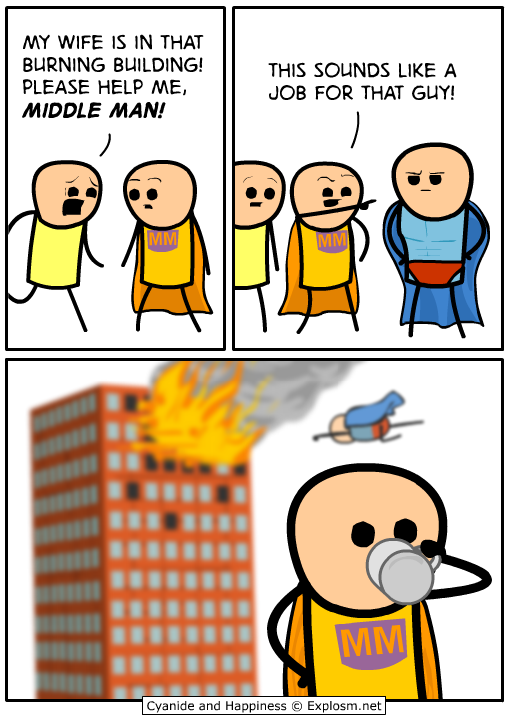On Leadership – continuing the Navy SEAL theme…
Although producing excellence, incentivizing excellence, incorporating new ideas from the ground and leading by example is a matter of life and death with SEALs, organizations who wish to remain competitive can adopt the same strategies. Originally posted on HBR.

Almost every world-class, high-performance organization takes training and education seriously. But Navy SEALs go uncomfortably beyond. They’re obsessive and obsessed. They are arguably the best in the world at what they do. Their dedication to relentless training and intensive preparation, however, is utterly alien to the overwhelming majority of businesses and professional enterprises worldwide. That’s important, not because I think MBAs should be more like SEALS—I don’t—but because real-world excellence requires more than commitment to educational achievement.
As an educator, I fear world-class business schools and high-performance businesses overinvest in “education” and dramatically underinvest in “training.” Human capital champions in higher education and industry typically prize knowledge over skills. Crassly put, leaders and managers get knowledge and education while training and skills go to those who do the work. That business bias is both dangerous and counterproductive. The SEALS can’t afford it. “Under pressure,” according to SEAL lore, “you don’t rise to the occasion, you sink to the level of your training. That’s why we train so hard.” When I see just how difficult and challenging it is for so many smart and talented organizations to innovate and adapt under pressure, I see people who are overeducated and undertrained. That scares me.
So I reached out to Brandon Webb, an innovative SEAL trainer/educator, and CEO of Force12 Media for real-world perspective on what industry could learn from a special operations sensibility. Webb, who served in the Navy from 1993 to 2006 and radically redesigned the SEAL training course curriculum, graciously shared his insight about what works – and what fails – when effecting a training transformation.
A member of Seal Team 3, Webb became the Naval Special Warfare Command Sniper Course Manager in 2003. This was a precarious time. The SEALs leadership recognized that technical excellence—better shooting and better shots—didn’t go nearly far enough in addressing the complex environments and demands that would be made upon sniper teams in wartime deployments in multiple theaters. The wartime challenge demanded better collaboration, greater situational awareness and more strategic application of cutting edge technology for the war-fighter. The post-9/11 environment demanded it. In response, some of the radical changes that Webb designed are the following: He broke the class into pairs, assigning mentors to boost support and accountability; he created classes that explore and explain technologies giving participants greater insight into the physics and underlying mechanics of their equipment; and he adopted the “mental management” techniques of Olympic world-champion marksmen, which we were at first reluctantly but then enthusiastically embraced. The results impressed the war-fighting community. SEALs like Marcus Luttrell (Lone Survivor) and Chris Kyle (American Sniper) observed how that course transformed their field capabilities and effectiveness.
“Our instructors were teaching better, and our students were learning better,” Webb noted in The Red Circle, his 2012 SEAL memoir. “The course standards got harder, if anything—but something fascinating happened: Instead of flunking higher numbers of students, we started graduating more. Before we redid the course, SEAL sniper school had an average attrition rate of about 30 percent. By the time we had gone through the bulk of our overhaul, it had plummeted to less than 5 percent.” And as he told me in a recent email exchange, he accomplished this by drawing from many diverse areas outside the military: “We took best practices from teaching, professional sports, and Olympic champions, and we made our course one of the best in the world in a very short period of time…” Webb noted. “We re-wrote the entire curriculum and saw our graduation rate go from 70% to 98% instantly, and hold there…”
Webb explicitly emphasized four transformational training themes. They’re neither obvious nor cliché. Unfortunately, I rarely see them in Fortune 1000 training programs/executive education or elite MBA programs.
1. Produce Excellence, Not “Above Average”
The first describes where Webb simply would not professionally go. “Being very good wasn’t good enough,” Webb declared. “Training programs shouldn’t be designed to deliver competence; they must be dedicated to producing excellence. Serious organizations don’t aspire to be comfortably above average.” “I honestly don’t even want to focus on good or competent,” Webb wrote, “it’s not in my nature and I don’t want to be part of any team or organization that is willing to set this standard. ‘Aim high, miss high,’ and you can quote me on that.”
In other words, training divorced from excellence is mere compliance. It is more “box ticking” than human capital investment. Is “above average” training really worth the time, energy and expense? A kaizen—continuous improvement—ethos is one thing. But customer service and leadership training that only enhances rather than transforms capabilities and skills doesn’t buy very much.
Webb’s hardcore perspective poses an existential challenge to most organizations’ views of human resources. Do they really want training to empower and bring out the best in their people? Or does everyone train with the tacit expectation that excellence matters less than being a bit better? Webb wonders whether most companies are serious about what training can and should mean.
2. Incentivize Excellence Not Competence
This links directly to his second theme around “getting the incentives right.” Even if the training itself is world-class, organizations need recognition and rewards systems that explicitly acknowledge and promote excellence. And, says Webb, also need the courage and integrity to reposition and replace those who can’t—or won’t—step up.
“For training to work it has to be effective and incentives have to be in place (financial, personal growth, promotion, etc.) for training to be effective in the work place and in order to get employee ‘buy in,’” Webb notes. “I’m a big fan of economist Milton Freidman… it’s as simple as creating alignment through incentives and that’s what we did by creating an instructor/student mentor program. The instructors had accountability (they would be evaluated on their student’s performance) which created the right incentive for them to pass. This made a huge difference. Plus we switched to a positive style of teaching and we saw our graduation rate rocket up.”
Should training overwhelmingly focus on skills enhancement? Or must it be managed to build better bonds and relationships throughout the enterprise? Webb unambiguously champions both. The training transformation made the SEALs culture more open to innovation and exchange. Incentives aligning and facilitating accountability improved the entire organization, not just the trainees.
3. Incorporate New Ideas from the Ground
This amplifies Webb’s third theme: successful training must be dynamic, open and innovative. Ongoing transformation—not just incremental improvement—is as important for trainers as trainees. “It’s every teacher’s job to be rigorous about constantly being open to new ideas and innovation,” Webb asserts. “It’s a huge edge, sometime life-saving, to adopt a good idea early and put it into practice…As an instructor I learned that you are never done learning, and your students can be a wealth of information, especially when guys like Chris Kyle would come back from Iraq and make recommendations on how to better train students to the urban sniper environment. We incorporated this type of mission brief back and actively sought out this knowledge from the SEAL sniper’s who were returning from places like Iraq, Afghanistan, Africa and other not so friendly places. Then we would take this knowledge and incorporate it into our yearly curriculum review; if important enough, we’d make the change within weeks. That’s how fast we could adapt our course curriculum and get approvals.”
4. Lead by Example
Getting better at getting better is a vital organizing principle for learning organizations. Arguably Webb’s most passionate training theme is the one that reflects his battlefield experiences, not just his training triumphs. The most important training behavior a leader can demonstrate, he asserts, is leading by example.
“Leading by example means never asking your team to do something you aren’t willing to do yourself,” Webb writes. “This can’t be faked, do it right and your team will respect you and follow you. Don’t do this, especially in a SEAL team, and you are doomed as a leader. I’ve seen it happen, and careers ended when it did. Lead by example and watch your team elevate you with their own accomplishments.”
If your organization cares about innovation or transforming customer service or being data-driven, how do you lead by example? In Laszlo Bock’s otherwise superb Google-based book on performance analytics—Work Rules!—the phrase “lead by example” is nowhere to be found. That’s both a pity and opportunity missed because, as Webb stresses, leading by example is what truly empowers small teams and teamwork.
“I’ve seen small teams accomplish incredible things in training (my times at the sniper school) and combat (Afghanistan and Iraq),” Webb recalls. “In Special Operations environments and top business environments, you have the privilege of working with people who just get the job done at all costs. They are self-motivators. Even if they don’t have the know-how, they will figure it out and just make it happen. It’s amazing to have a whole team that thinks this way, and to see what they can accomplish.”
There are no panaceas. The level of motivation, dedication and self-sacrifice the SEALs demand from themselves and each other goes far, far beyond what most businesses and business schools should ever ask, let alone expect, from their people. But that said, for leaders and managers who truly care about their people and their customers, the SEALs training template deserves to be taken seriously. No one rightly doubts the vital role education plays in creating and sustaining economic competitiveness worldwide. But it’s long past time that CEOs, boards, business schools and universities revisit what world-class training should mean, as well.
By: Michael Schrage
Original POST on HBR

